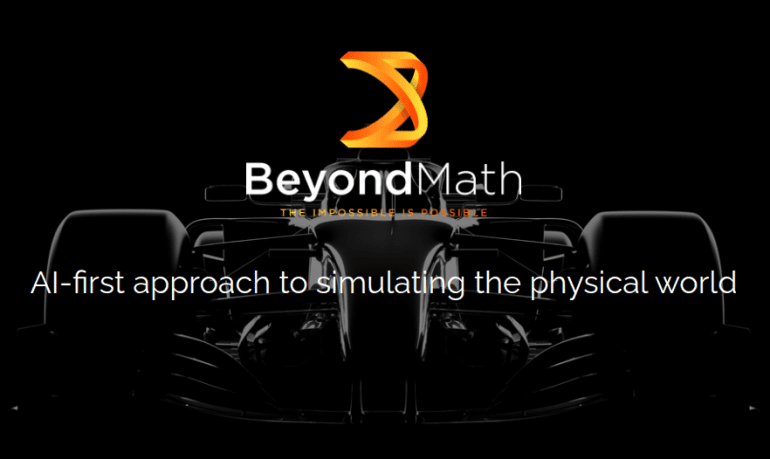- BeyondMath Ltd. secures $8.5 million in seed funding led by UP. Partners, with participation from Insight Partners and InMotion Ventures.
- The funds will commercialize an AI-powered multiphysics simulation platform that accelerates engineering iterations by up to 1,000 times.
- The AI models are trained on a vast library of physics equations, enabling advanced simulations across various industries.
- The platform allows rapid, cost-effective design iterations without physical prototypes or supercomputing simulations.
- BeyondMath collaborated with a Formula One racing team to optimize aerodynamics, showcasing the platform’s capabilities.
- The company aims to extend its impact beyond Formula One, potentially contributing to solving complex physics problems.
- BeyondMath utilizes Nvidia DGX H200 AI systems for large-scale training of its physics solver algorithms.
- The platform democratizes access to supercomputer-level simulation capabilities, making it accessible to a broader range of industries.
Main AI News:
BeyondMath Ltd., an innovative AI startup, has raised $8.5 million in a seed funding round to revolutionize engineering processes through advanced simulations driven by AI models trained on physics equations—the funding round led by UP.Partners, with participation from Insight Partners and InMotion Ventures, will accelerate the commercialization of BeyondMath’s multiphysics simulation platform, which claims to enhance engineering iterations by up to 1,000 times.
The company is at the forefront of a significant shift in simulating complex physical phenomena, which is essential for designing and developing a broad range of technologies, including vehicles, aircraft, lithium-ion batteries, and data center infrastructure. BeyondMath’s approach involves training transformer models—similar to those powering ChatGPT—on a comprehensive library of physics equations, effectively embedding the “fundamental laws of the universe” into AI.
With this cutting-edge AI, BeyondMath is poised to transform engineering and design processes across various industries. Its platform enables teams to evaluate new concepts’ performance without needing physical prototypes or expensive supercomputing simulations. The rapid physics simulation engine developed by BeyondMath integrates real-world data into simulations, ensuring precise and reliable results.
In a notable example of its technology, BeyondMath partnered with a Formula One racing team to optimize the aerodynamics of their race cars. The company’s physics-trained AI model, which encompasses thousands of equations, replaces traditional supercomputers, optimizing performance much faster and at a lower cost. According to co-founder and CEO Alan Patterson, what previously took days to iterate can now be achieved in minutes, offering a substantial competitive advantage.
BeyondMath’s vision extends far beyond Formula One. Patterson sees the potential for AI to contribute to solving some of physics’ most challenging problems, possibly leading to a “theory of everything” that unifies general relativity and quantum mechanics—a problem that has puzzled scientists for decades.
BeyondMath relies on Nvidia Corp.’s cutting-edge graphics processing technology to realize this ambitious vision. As one of the first adopters of the Nvidia DGX H200 AI system, BeyondMath leverages its immense computational power to train physics solver algorithms at an industrial scale. Patterson describes the DGX H200 as transformative for AI-driven simulation, enabling the company to explore new frontiers in physics-based engineering.
Holger Mueller of Constellation Research Inc. notes that BeyondMath is tapping into the lesser-known capability of generative AI to comprehend complex mathematics. This innovative use of AI has the potential to drastically accelerate research and development, offering faster, more cost-effective solutions than those currently available.
A key benefit of BeyondMath’s platform is its ability to democratize access to supercomputer-level design capabilities. Patterson points out that existing state-of-the-art physics simulation tools, which require $50 million in supercomputers and days of data processing, are accessible only to the wealthiest companies. In contrast, BeyondMath’s AI platform offers unprecedented speed and cost efficiency, making advanced simulation technology available to many industries. This breakthrough promises to streamline industry workflows and save billions and plays a crucial role in reducing carbon emissions by minimizing unnecessary resource use.
Conclusion:
BeyondMath Ltd.’s successful funding round and the development of its physics-driven AI platform signal a significant shift in the engineering and design industries. By making advanced simulation capabilities more accessible and cost-effective, BeyondMath is poised to disrupt traditional engineering methods, offering faster, more efficient R&D processes. This democratization of high-level computational tools could level the playing field for smaller companies, enabling broader innovation across multiple sectors. As this technology matures, it has the potential to redefine how industries approach design and problem-solving, leading to accelerated advancements and reduced costs in engineering processes.

